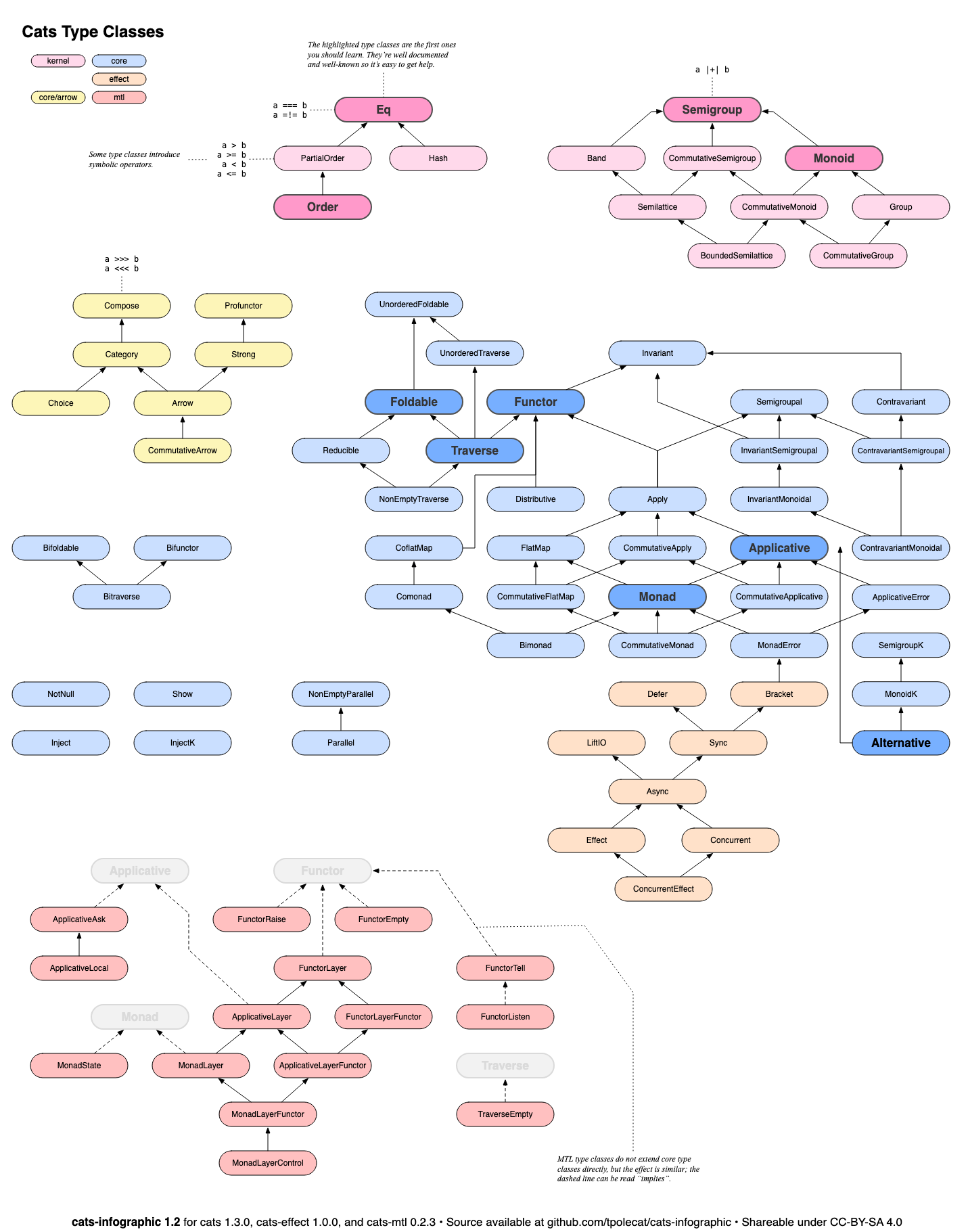This is the first blog of a long series I would continuously posted over the years, mostly about Functional Programming languages and its features. It is part of my journey to learn Ocaml, Rust, Scala at the same time. The first few of this series would be Types, mostly TypeClasses and DataTypes, this is a long one, and if you are interested to know more, scroll down to the end of the page, I would list all learning materials I come across with through out my journey.
Motivation
People usually know the word Typeclass from Functional worlds, mostly from Haskell I guess as it being the most famous but rarely used functional PL in all industries. But from my short experience with Ocaml, the concept of type class is not very strong but you could feel there must be something there: at least, you heard people talking about Monad all the time😆, you heard about bind function aka >> or (let*) and so on which is heavily used in Option, Result or Futureish types. Of course, the first-class module feature in Ocaml make me feel sort of an usage of “Typeclass” but still not having a concrete understand of it make me feel anxious and I kinda not sure about the fact: Typeclass is useful? Is it?
Thanksfully, while I am reading I came into Cats which have a relative detailed documentation including some practical examples
There are a lot of libraries for different PL implemented Typeclasses, including fp-ts and its successor effect-ts for Javascript, return for Python and finally Cats and Zio for Scala. Unfortunately, most of them does not have great learning resources and documentations which is daunting: The underlying of Typeclass is an advanced math theory called Category Theory, so hard for people like me to have a grasp of.
PS: part of the reason here is that I am not willing to learn Haskell which emphasize pure FP and I am not a big fan of pure. If you are a Haskeller(I don’t know how the community call it) happen to read this, you should not continue reading as you probably have a better understanding of it.
The idea of the rest of this article is heavily borrowed from the book: Scala with Cats, including Figures, thanks to this well-written book, I cannot stop finishing it once I started.
Introduction
There are many Typeclasses, Semigroup, Applicative, Monoid, Monad, Functor…, And they have very complex relationships, thanks for this structure from @Cats.

Semigroup
And I would like to talk about Semigroup first(I would show the code using both Ocaml and
Scala):
Ocaml
type Semigroup = sig
type t
combine: t -> t -> t
endScala
trait Semigroup[A] {
def combine(x: A, y: A): A
}It seems easy right?
1 + 2 = 3,
“hello” + “world” = “helloworld”
You may say: Huh, Easy MATH.
And indeed, semigroup follows Associativity which we learned back when we are in Primary School:
(1 + 2) + 3 == 1 + (2 + 3)
Hello + (” ” + “world”) == (“Hello” + ” ”) + “world”
But what is the usage of Semigroup? The answer would be answered when we talked about other Typeclass that extends Semigroup and use concrete type to showcase the capability of Typeclasses. Let’s continue.
Monoid
Ocaml
type Monid = sig
include Semigroup
empty: t
endScala
trait Monoid[A] extends Semigroup[A] {
def empty: A
}So let’s implement Monoid first:
Ocaml
module IntMonid = struct
type t = int
let empty = 0
let combine x y = x + y
end
module FltMonid = struct
type t = float
let empty = 0.
let combine x y = x .+ y
endScala
import cats.Monoid
implicit val intAdditionMonoid: Monoid[Int] = new Monoid[Int] {
def empty: Int = 0
def combine(x: Int, y: Int): Int = x + y
}Then we could do something like:
Scala
// For Int
Monoid[Int].combine(1, Monoid[Int].empty)
// For Float
Monoid[Float].combine(1, Monoid[Float].empty)
// You could also do
val items = List(1,2,3,4);
items.foldleft(Monoid[Int].empty)(Monoid[Int].combine)In Scala, once we load all instance we want, we could do this for Int, Float, String…all the type that satisfy Monoid typeclass.
💡Small Quiz
- Implement Monoid for Boolean(hint: there are 4 of them)
- Implement Monoid for Set(do intersection satisfy Monoid)
not yet finished…
